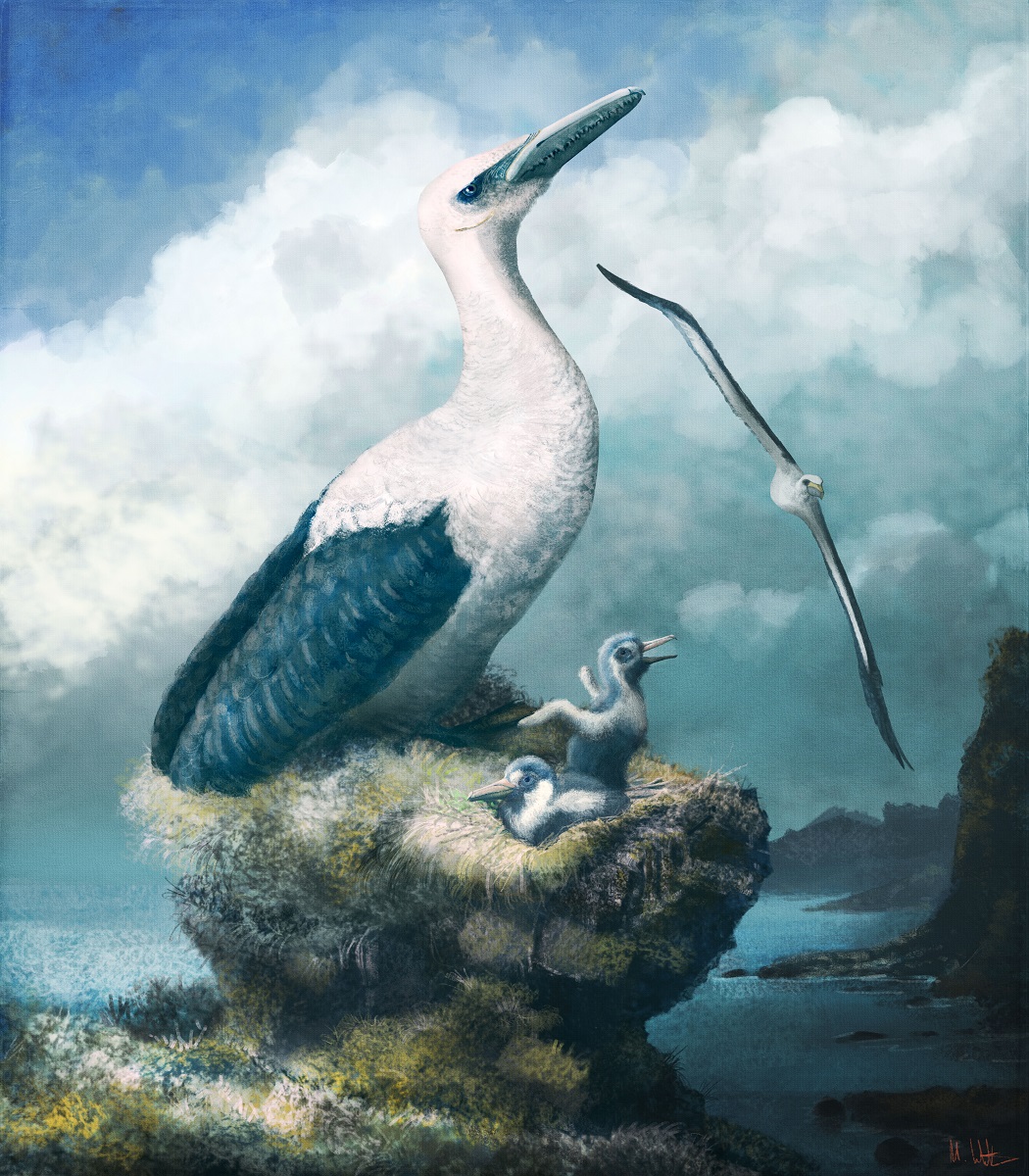Imagine an albatross with a hacksaw for a mouth. Set that strange creature about 50 million years in the past and you’ve got the image of a pelagornithid, a group of ancient avians that included some of the largest flying birds of all time. And now paleontologists have uncovered in that group what may be the largest known flying birds ever, with wingspans of roughly 20 feet.
The new study documenting the birds, published today in Scientific Reports, is the result of a fossil detective story spanning from Antarctica to California. By comparing a pair of polar fossils to the remains of related birds, paleontologists have been able to identify the early history of enormous fliers that were some of the first birds capable of soaring across seas.
The bird jaw, which came from a rock formation laid down over 37 million years ago, looks almost like a woodcutting tool rather than a bone. The jaw has a series of large and small spikes, outgrowths of the beak that have a passing resemblance to teeth. On a living animal, the points would have been covered in keratin and given the bird a sinister saw-toothed smile. That feature immediately identified the jaw as belonging to a pelagornithid, also known as bony-toothed birds that have a very long fossil record. The oldest pelagornithids evolved about 56 million years ago, and the most recent flew through the skies about two million years ago. Their fossils are found all over the world.
A pelagornithid’s jaw bone was found in a rock formation laid down more than 37 million years ago.
Paleontologists have found bony-toothed birds from places all over the world, from New Zealand to South Carolina. The newly-described Antarctic fossils, though, are the oldest known and hint that these birds quickly diversified into a range of sizes within six million years of their origin. By 50 million years ago, there were bony-toothed birds from the size of a modern-day albatross to giants with wingspans twice as wide. The next closet fossil contender is an extinct vulture relative called Argentavis, which had a wingspan between 16 and 20 feet. The close competition might be a signal that these birds were pushing the boundaries of flight. Previous studies have calculated that the largest of the bony-toothed birds were near the limit of how big a bird could get and still fly, meaning these birds are the strongest contenders for the largest flying birds to ever soar.
Those impressive wings would have allowed the pelagornithids to range far and wide, soaring long distances on outstretched wings. That helps explain why fossils from various species of pelagornithids have been found all over the world during their extended evolutionary tenure. These long-lived and successful birds likely using their spiky jaws to feed on fish and squid snatched from just beneath the surface.
In the case of the birds described in the new study, the avians lived in an environment that would have seemed strange in some ways and familiar in others. “Eocene Antarctica was much warmer than we see today,” Kloess says, with carpets of ferns and stands of conifers on land that sheltered prehistoric marsupials and even frogs. Some of the other birds might have seemed familiar, though. Ancient relatives of penguins, albatrosses, and falcons have been found from these rocks, with the bony-toothed birds adding to the flock.
https://www.smithsonianmag.com/science-nature/scientists-reveal-what-may-be-largest-flying-bird-ever-180976128/
